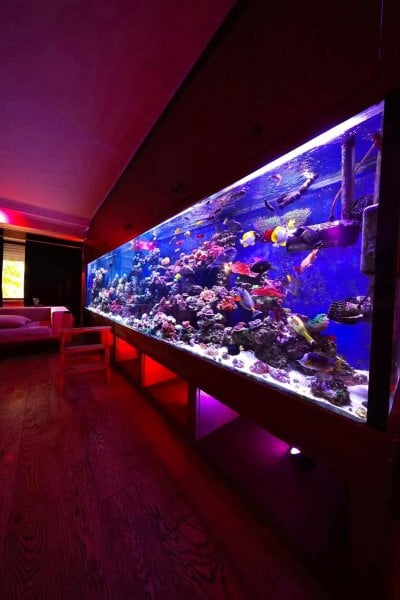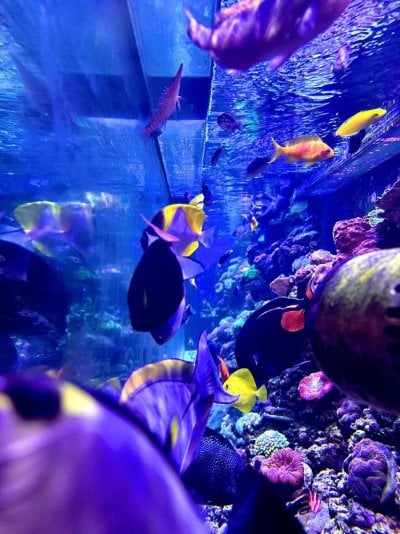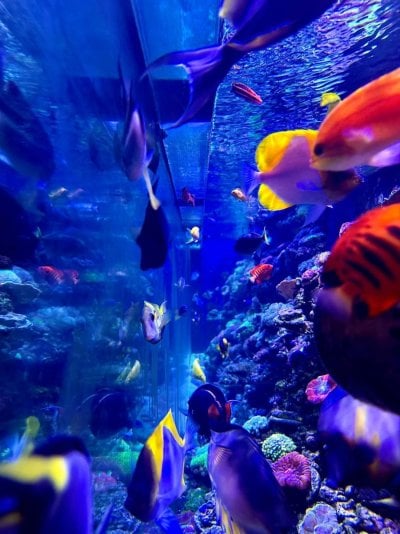A possible “so what”, and take this as a story, is that a bio filter dominated by ammonia and nitrite oxidation while appropriate for aquaculture and sewage water treatment, it is sub-optimal for a reef aquarium. What might be a characterization of a good bio filter for the reef aquarium is one that cycles nitrogen into biomass which in turns encourages the develop of multiple tropic levels, an overly complex way of saying feeding the coral. This idea could be taken as an elaboration of what the hobby calls creating a mature system or increasing diversity.
Holy cow - please hit the emergency brake. I think that I above have shown that microbial activity create NH3/NH4 in the mineralisation process of organic matter. Below my DSB - there is no fish, no external feeding - its just heterotrophic bacteria breaking down organic matter. In a mature system that have run for years - there is a lot of organic matter and it can always be seen as a potential NH3/NH4 bomb. With all the theories about Old System Syndrom that is drifting around in the hobby - NH3/NH4 and/or H2S explosions are my favorites.
For me - a good nitrification cycle is my safe belt as long as I feed my system with organic matter
Dry rock and corals day one. You can literally load it if you want. Like realistically i say anything. Ive done this with acros and all other types of sps, lps etc.
dose n and p to the right ratios to avoid dinos, keep them low but not too low. Like .01-.03 and like 5 nitrates
Of course - as long as you don't feed your corals (or fish) organic matter - your photosynthesizing corals will act as primary producers - living only on inorganic matter plus light energy. The second you feed something with organic matter (external or internal produced) NH3/NH4 will be produced. Around 20 - 25 % of the organic N in the food will be as new biomass - around 75-80 % will be inorganic N waste ( NH3/NH4)
These paper shows that it is total possible to farm photosynthesizing corals only with light energy and inorganic matters but even in this setup there will probably be inorganic N waste produced from the animal metabolism even if the food is produced inside the animal. However - the setup with an animal and primary producent inside the animal open for a very fast internal recycling of the N waste from the metabolism.
An example with one organic/inorganic loop (feeding fish)
I feed with around 30 g frozen artemia and cyclops every day. Around 4 % of this is protein => 1,2 g protein/day- Around 16 % of the protein is N => 0,192 g N /Day => 192 mg N/day. Around 80 % of this N will be as inorganic N waste in the first loop into the water => around 154 mg N a day out into the water after the first loop (if everything is consumed)
My system is 310 L => =>154/310 mg/L inorganic N => around 0.5 mg N/L. => 0.5 NH4-N/L => 0.64 NH4/L a day-
If this is totally nitrified it will be 0.5 mg/L NO3-N => 2.2 mg/L NO3/day
Summary - if all my added N per day is converted to biomass and the waste is processed by the book - my feeding behaviour will rise the NO3 concentration in my aquaria with around 2 mg/L a day. As my post above shows - if I totally stop my controlled denitrification process - my NO3 concentration rise with around 5 mg/L NO3 and day. 2.5 times higher than the expected worst scenario additions from my way of feeding.
This means that at least 0.67 mg/L NH4-N will be produced internally in my aquarium every day - it also means that my system process at least 1.1 mg/L NH4-N a day in the nitrification process - probably much more if you consider all the processes that take place in a working aquarium.
My aquarium is 310 L => 310 * 1.1 mg = 341 mg N (at least) will be processed daily. Back calculation says that if this should be taken care of in a biomass upbuilding process (other than the initial biomass build up at the first feeding) - my system need to produce around 1.9 g new protein a day => 47.5 g raw biomass a day produced of the waste - of internal and/or external origin - inorganic N in the water
My experiment with NH3/NH4 below the DSB have shown that the NH3/NH4 concentration in the poor water is around 0.4 mg/L NH3/NH4 higher than in my DT. The flow through the bed is around 2000 L a day - it means that around 800 mg NH3/NH4 will be transported through the bed and in some extent out in the DT every day - an addition of 2,5 mg/L if all get out in the aquarium. This is a lot more than my theoretical calculations based on feeding and nitrate measurements - which lead me to consider if there is an Anammox process taking place in the DSB.
However - as I see it - I would not risk to run my present aquarium without doing all I can in order to have a good nitrification process taking place and establish it as soon as possible in a new start if I´m plan to feed my organisms with organic matter.
Sincerely Lasse
Last edited:






















